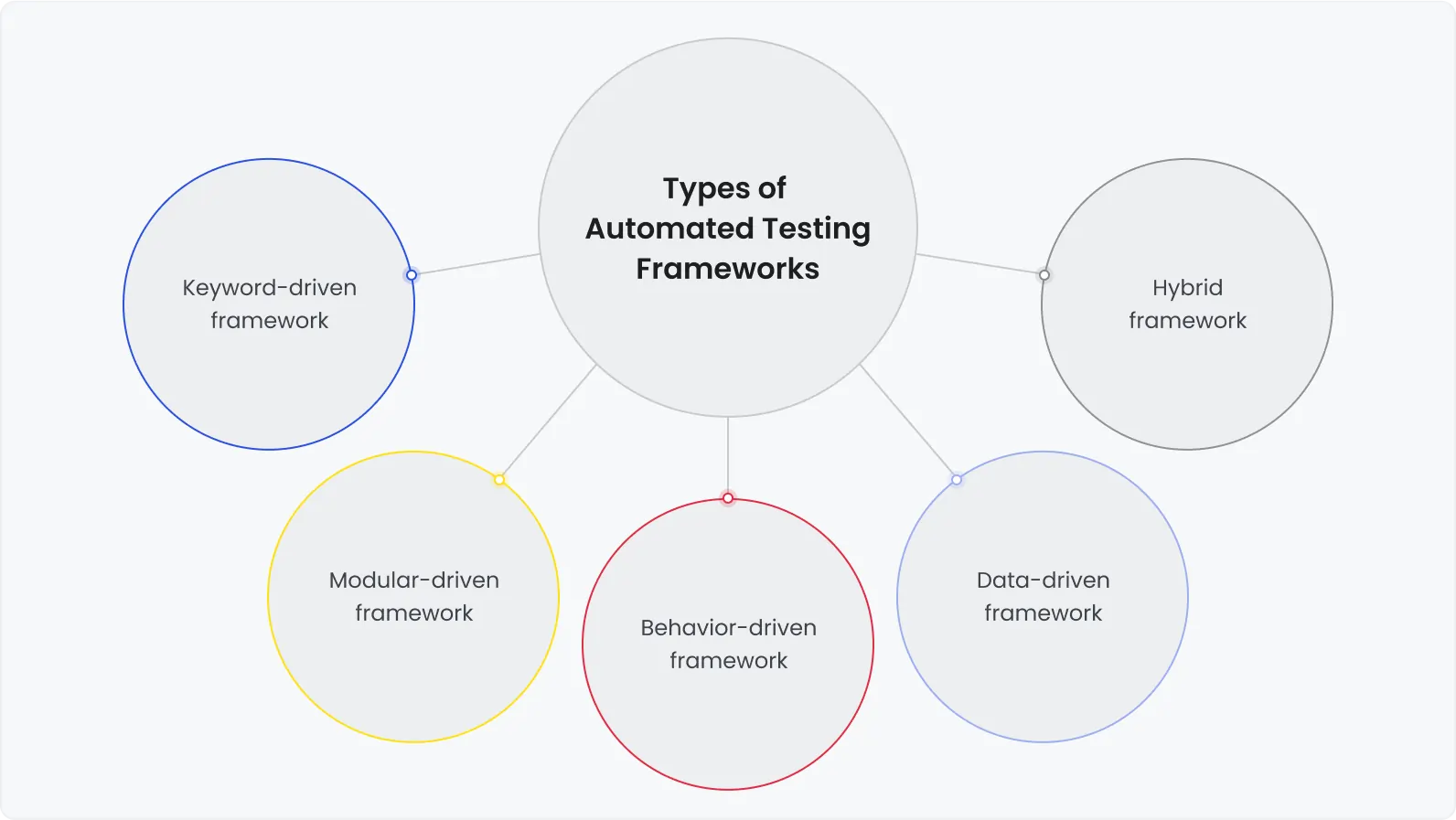12 minutes to read
The Comprehensive Guide to Testing-as-a-Service


Chief Executive Officer
Let's imagine a ship trudging through Arctic waters without a compass. The absence of robust testing can be akin to this ship. Consider the cautionary Equifax case, a global credit reporting agency that fell victim to one of the most infamous data breaches in recent history. In 2017, the personal information of nearly 143 million people was exposed due to a vulnerability that could have been detected and patched through rigorous testing.
Of course, such breaches are a matter of complex failures, not only testing oversight. But anyway, this example underscores the critical role of testing in fortifying the digital fortress of software. It's the guardian against such catastrophic breaches and software glitches that can tarnish reputations and jeopardize user trust.
What is TaaS? In this case, Testing-as-a-Service (TaaS) emerges as a hero, offering a dynamic and efficient approach to ensuring software quality. TaaS is not just about catching bugs; it's a strategic asset that elevates your testing game. Imagine a world where your testing efforts seamlessly adapt to the rhythm of your projects, scaling up or down as needed, without the constraints of traditional testing models.
TaaS as a service is a paradigm shift in how we approach software quality. As we embark on this guide, let's unravel the layers of TaaS, exploring its models, types, and features, and uncovering the unconventional benefits that make it a game-changer in modern software testing.

Understanding Testing-as-a-Service
Testing-as-a-Service (TaaS) appears as a dynamic force, reshaping how we approach software quality assurance. TaaS is a strategic ally in the pursuit of impeccable software.
Again: what’s TaaS. At its core, it is a testing model where organizations leverage third-party testing services to ensure the quality of their software without the constraints of traditional testing approaches. Unlike the conventional in-house testing models, TaaS offers flexibility, scalability, and expertise on demand. This shift in paradigm is not just a trend, it’s a real opportunity to take your business to the next level.
Why you’ll do well out of it. Let the figures speak volumes. Studies indicate that software defects cost U.S. businesses a staggering USD 2.41 trillion annually. These numbers underscore the financial impact of subpar software quality. In contrast, organizations adopting TaaS experience not just cost savings but a strategic investment in long-term software health.
Key Components of TaaS:
On-Demand Testing: The ability to summon testing expertise precisely when needed, without the baggage of a perpetual commitment.
Scalable Resources: TaaS allows you to “flex your testing muscle”, scaling up or down based on project demands.
Specialized Expertise: Access to a diverse pool of testing specialists, catering to unique project requirements.
Comprehensive Testing Types: TaaS covers a spectrum of testing types, from functional to non-functional, ensuring a holistic approach to software evaluation.
Perks That TaaS Provides
Cost savings and software efficiency Testing as a Service
Embarking on the Testing-as-a-Service (TaaS) journey is not merely a strategic choice; it's a roadmap to software testing efficiency and excellence. Let's explore the compelling advantages that make TaaS a game-changer.
Cost Savings: TaaS revolutionizes the cost dynamics of software testing. Studies show that organizations adopting TaaS experience up to 30% cost savings compared to traditional in-house testing. Moreover, only 1% (!) of respondents see no benefits from testing at all. By the way, this financial efficiency is not just about the bottom line but rather a strategic allocation of resources where quality meets affordability.
Scalability: The ability to “flex your testing muscles” based on project demands is TaaS's hallmark. It ensures that your testing resources align with your project's ebb and flow, avoiding unnecessary overheads during lulls and ensuring robust testing during peaks.
Improved Efficiency: TaaS brings a fresh breeze of efficiency to the testing landscape. With on-demand access to specialized expertise and scalable resources, testing becomes not just a necessity but a strategic advantage. Organizations report a 25% increase in testing efficiency when embracing TaaS.
Quality Assurance: Beyond the numbers, TaaS is a guardian of software quality. The diverse testing types and specialized expertise ensure that your software not only functions but excels in real-world scenarios. Note: TaaS not only provides fixing bugs but also a seamless user experience.
Types of TaaS Providers
The landscape of software testing is very diverse, so you should wisely choose the tools of the trade. TaaS providers come in various flavors, each with its unique strengths and considerations.

Key Considerations in Choosing a TaaS Provider
Selecting the right TaaS provider goes beyond choosing the features needed; it's rather about finding a synergy between your project requirements and the provider's capabilities. Here are key considerations to guide your decision-making process.
Factors to Consider
Expertise: The moment of uttermost importance is to choose the provider with experience in your niche. Industry-specific expertise ensures a nuanced understanding of your testing needs. For example, healthcare providers must meet strict regulations, and the potential testing partner must know this niche inside out.
Technology Compatibility: Ensure that the provider's technology stack aligns with your project requirements. Compatibility is key to seamless integration and efficient testing. Shared dashboards or other managing tools are excellent aids in this case.
Scalability: A good TaaS partner should grow with your project. Scalability ensures that your testing resources can adapt to the evolving demands of your software.
Experience in Diverse Testing Types: Different projects require different testing types. Ensure that the provider has experience in a broad spectrum of testing scenarios, from functional to non-functional testing.
How to Evaluate Track Record
1. Client Testimonials: Real-world experiences of other clients are invaluable. Look for testimonials that reflect the provider's commitment to quality, efficiency, and collaboration. Glassdoor or Clutch — try to gather as much feedback as you can.
2. Track Record in Project Delivery: Evaluate the provider's history of delivering projects on time and within budget. Consistent, reliable project delivery is a hallmark of a trustworthy TaaS partner. Yeah, it is not a guarantee that your project also will be on time and within the budget, but still, chances are it will be.
Challenges and Risks in TaaS
Embarking on the Testing-as-a-Service journey is akin to setting sail on uncharted waters. While the promise of efficient testing beckons, it's crucial to acknowledge and navigate potential challenges and risks. We are not going to break the mold, but rather a little bit unveil strategies to keep your TaaS voyage on course.

Identifying Challenges and Risks
Diverse Testing Environments: Managing testing across various platforms, devices, and browsers can be like orchestrating a symphony. Ensuring uniform quality across this diverse landscape is a challenge that requires careful consideration.
Data Security Concerns: Trusting a third party with your software's testing data can raise security eyebrows. Ensuring robust data protection measures is imperative to safeguard against potential breaches.
Lookout: Real-Life Testing Fails
Knight Capital Group: In 2012, a software glitch at Knight Capital Group led to a financial meltdown, causing losses of over USD 400 million in less than an hour. This incident underscores the critical importance of rigorous testing in financial systems.
Ariane 5 Flight 501: The maiden flight of the Ariane 5 rocket in 1996 ended in disaster due to a software bug. The rocket's software couldn't handle a conversion error, leading to a catastrophic failure.
Build software that works the way you imagined
How to Mitigate Risks
Thorough Testing Protocols: Implement rigorous testing protocols that cover a spectrum of scenarios, ensuring your software is resilient in diverse environments.
Data Encryption and Compliance: Prioritize data encryption and compliance with industry standards to fortify your testing data against potential security threats.
Inspiration: Successful Implementation
Facing the challenges of managing a complex airline reservation system, Delta Airlines successfully implemented TaaS to ensure the robustness and reliability of its software. Delta's case serves as a testament to the transformative power of TaaS when applied strategically to address specific challenges.
TaaS Tools and Technologies
You definitely need the right set of tools and technologies to navigate the dynamic landscape of testing. So what are the key players in the TaaS toolkit and how do they streamline the testing process? Keep calm, you don’t need to know the ropes of testing tools, we just want to tip you off in case you are looking for the right testing partner.
Common TaaS Tools
Selenium: A powerful tool for automating browser actions, Selenium ensures efficient and accurate functional testing.
Jenkins: As a continuous integration and continuous delivery (CI/CD) tool, Jenkins automates the testing and deployment pipeline, enhancing testing efficiency.
Applitools: Specializing in visual testing, Applitools helps detect visual bugs and anomalies, ensuring a seamless user experience.
JIRA: A comprehensive project management tool, JIRA facilitates efficient communication and collaboration among testing teams. Someone may call it a monster in terms of planning; well, this way, it’d be the most organized “monster”.
Top 4 Skills Your Partner Should Have
Scripting Languages: Proficiency in scripting languages like Java or Python is crucial for leveraging automation tools like Selenium.
Continuous Integration: Understanding CI/CD principles and tools like Jenkins is essential for streamlining testing processes. We have set out this subtopic in a series of articles about DevOps.
Visual Testing Expertise: Visual testing tools like Applitools require a keen eye for detail and an understanding of visual bug detection.
Project Management: Proficiency in project management tools like JIRA is vital for efficient communication and collaboration within testing teams.
Streamlining Testing Processes
Efficiency Through Automation: Tools like Selenium and Jenkins automate repetitive testing tasks, allowing testing teams to focus on critical aspects and ensure thorough testing coverage.

Efficiency Through Automation: Tools like Selenium and Jenkins automate repetitive testing tasks, allowing testing teams to focus on critical aspects and ensure thorough testing coverage.
Visual Testing Precision: Visual testing tools like Applitools provide a meticulous examination of the user interface, ensuring visual consistency and a polished user experience.
These tools and technologies play the role of virtuoso performers, harmonizing efficiency, precision, and quality.
What’s Next? Trends and Future Outlook
Recall the metaphor of a ship trudging through Arctic waters. So staying attuned to trends in any niche is akin to having a compass in such a voyage. Let's set our sights on the current trends in Testing-as-a-Service and peer into the crystal ball to glimpse its future trajectory.
Current Trends We Are Observing
1/ AI-Driven Testing: The integration of artificial intelligence (AI) into testing processes is gaining ground. From automated test generation to predictive analytics, AI is enhancing the efficiency and accuracy of testing.
2/ Shift-Left Testing: The trend of shifting testing processes earlier in the software development life cycle is also gaining prominence. This proactive approach ensures that potential issues are identified and addressed at the nascent stages of development.
3/ Blockchain Testing: With the rise of blockchain applications, there's a growing need for specialized testing to ensure the security and functionality of decentralized systems.
4/ Increased Automation: The future of TaaS is undeniably intertwined with increased automation. From test script generation to result analysis, automation will continue to be a driving force in testing efficiency.
5/ Enhanced Security Testing: As cyber threats evolve, the future of TaaS will see an intensified focus on security testing. Robust measures to identify and mitigate vulnerabilities will become paramount.
6/ IoT Testing Domination: With the proliferation of Internet of Things (IoT) devices, testing their interoperability and functionality will become a cornerstone of TaaS in the years to come.
Kick-off With TaaS
Set sail on a strategic quest for software excellence. But note that the path to TaaS adoption is not always a well-trodden one. We crafted a little step-by-step guide that not only covers the conventional steps but also sheds light on hidden pitfalls and unconventional wisdom.
Follow These Steps
1. Define Clear Objectives: Clearly articulate your testing objectives and align them with your overall business goals. Having a crystal-clear vision ensures that TaaS becomes an enabler of your strategic objectives.
2. Thorough Vendor Evaluation: Beyond the checkboxes, delve into the nuances of potential TaaS providers. Evaluate their industry expertise, scalability, and compatibility with your technology stack. Client testimonials and case studies provide invaluable insights.
3. Unearth Hidden Costs: TaaS adoption may come with hidden costs, such as integration complexities or additional training needs. Unearth these costs early in the process to avoid surprises down the road.
4. Cultural Alignment: Ensure that your organizational culture aligns with the flexibility and collaborative nature of TaaS. A cultural mismatch can impede the seamless integration of TaaS into your workflows.
5. Continuous Learning: TaaS is not a one-size-fits-all solution. Embrace a culture of continuous learning and refinement. Stay abreast of emerging trends, technologies, and best practices to maximize the benefits of TaaS.
To Sum It Up
Testing-as-a-Service emerges not just as a note but as a crescendo of efficiency, quality, and innovation. TaaS orchestrates testing efficiency through automation, scalability, and a diverse array of testing types. Beyond bug detection, TaaS is also a guardian of software quality, ensuring a seamless user experience. And for sure, it's also a dynamic force driving innovation in testing processes and technologies.
Our world is more fast-paced than ever before, and in it, software quality is synonymous with user satisfaction and business success. Here, TaaS stands as a beacon of reliability. It's not merely a tool; it's a strategic imperative for organizations aiming not just to develop software but to craft digital experiences.
Embrace the possibilities of TaaS, explore its nuances, and let it become the maestro in your software testing symphony.
Team up with an award-winning software QA and testing company
Trusted by 300+ clients worldwide
